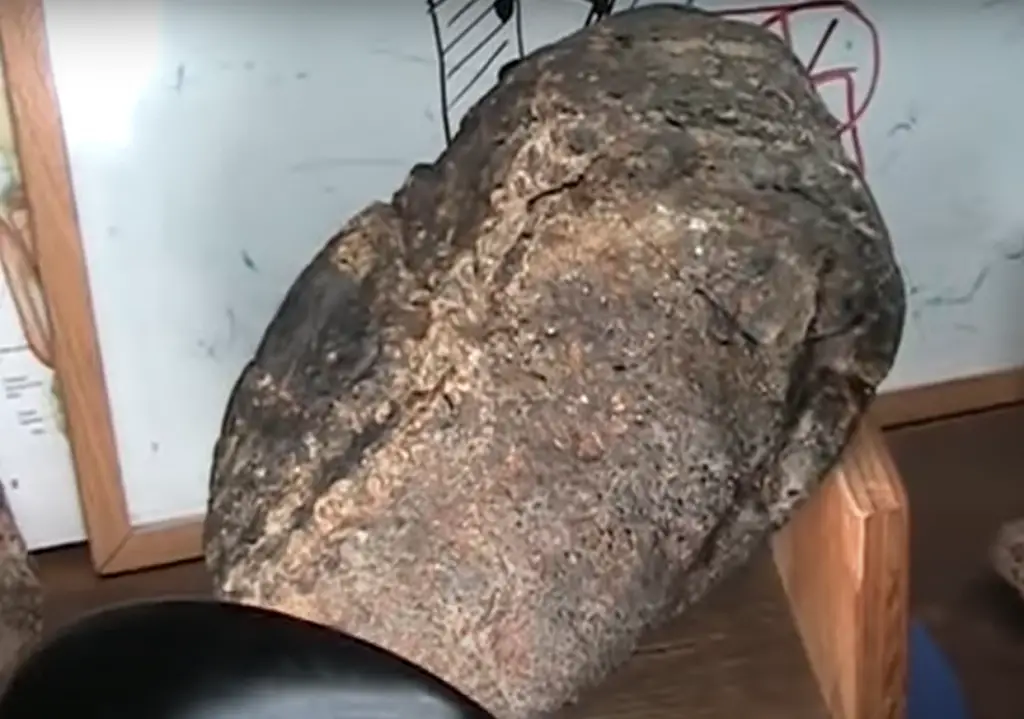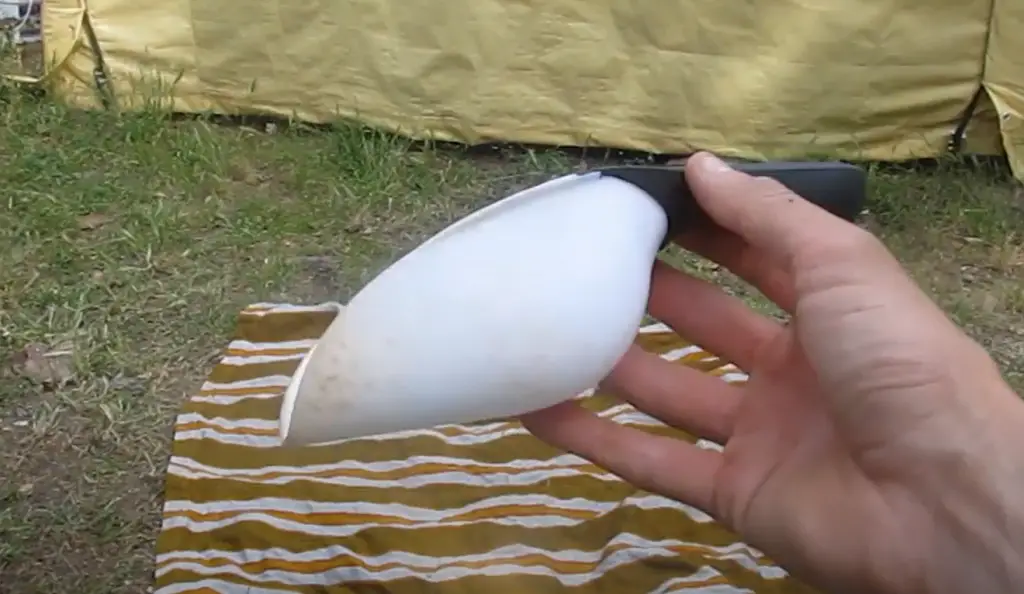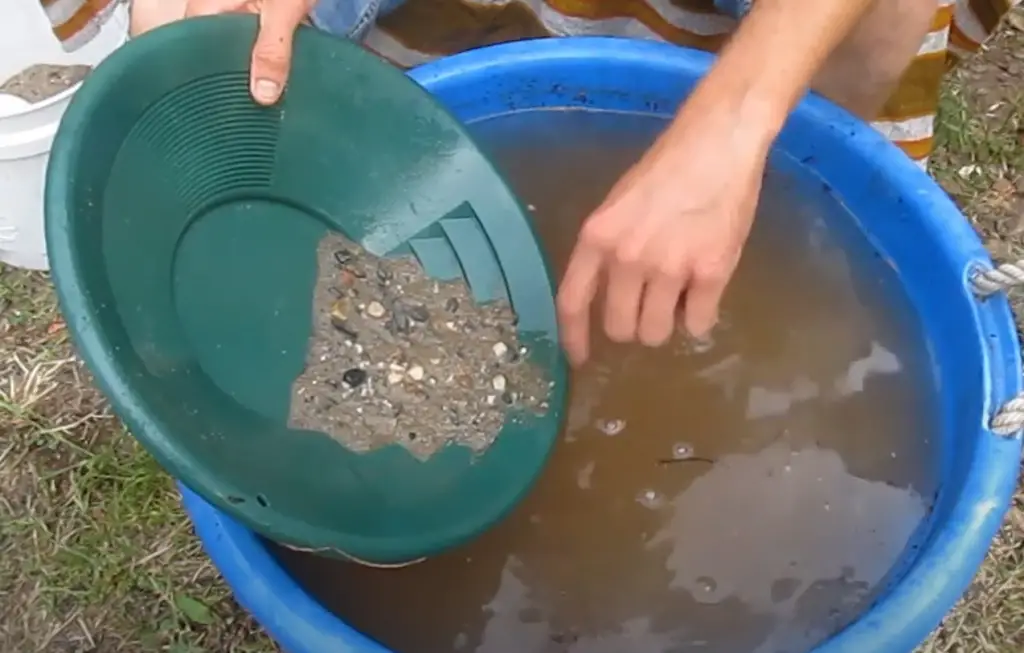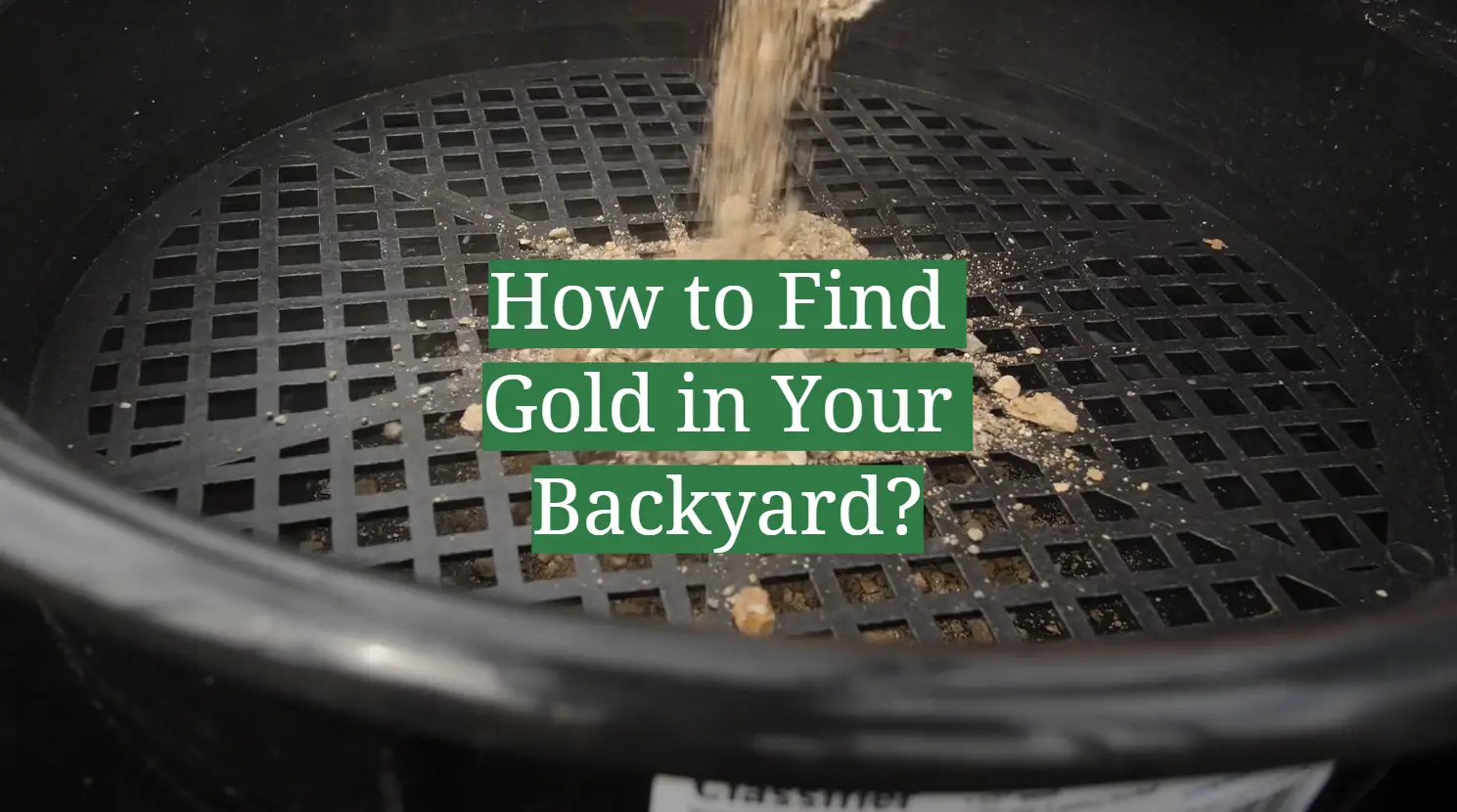You may be wondering, can you really find gold in your backyard? The answer is YES! You just need to know where to look and what to do. In this epic guide, we will teach you everything you need to know about finding gold in your backyard. We will cover common questions such as “what type of soil is best for finding gold?”, “what tools do I need?”, and “where should I start looking?”. So if you’re ready to start finding some gold of your own, keep reading!
How Likely Can You Find Gold in Your Backyard?
Gold is a valuable resource that has been used for centuries. It is often found in nature, but it can also be man-made. There are many ways to find gold, and sometimes all it takes is a little patience and perseverance.
Gold is valuable for a few reasons. First, it’s rare. There’s only so much gold in the world and new mines are becoming increasingly difficult to find and develop. Second, gold doesn’t corrode or tarnish over time like other metals. This means it can be reused and recycled without losing any of its value. Lastly, gold is seen as a safe investment by many people. It’s not subject to the same volatility as stocks or other investments, which makes it a popular choice for those looking to protect their wealth.
Additionally, if your backyard is located close to water, chances of finding gold or other valuable metals & minerals rise. Finally, if you are willing to put in the time and effort to search for gold, then your chances of success go up exponentially. With that said, let’s take a look at some tips on how to find gold in your backyard.

First and foremost, it is important that you have patience when searching for gold. Gold is a very rare element, and it can take months or even years to find a sizable amount. Additionally, it is important to have the proper tools and equipment when searching for gold. A metal detector is an essential tool that will help you find gold in your backyard. Finally, it is also important to be knowledgeable about where to look for gold. Certain areas of the world are known for having high concentrations of gold, so it is important to do your research before beginning your search.
Keep in mind that gold hunting is a very time-consuming and difficult task. However, if you are willing to put in the time and effort, then you may be lucky enough to find gold in your backyard. Who knows, you may even strike it rich! [1] [2]
What is Fool’s Gold and is It Worth Anything?
Fool’s gold is a nickname for iron pyrite. Pyrite is known for its brassy color and shiny metallic luster. It’s often confused with real gold, but there are some key differences between the two. For one, a fool’s gold is much lighter than gold. It also has a different hardness and streak color. When you scratch a fool’s gold against a white porcelain plate, it leaves a greenish-black streak, whereas real gold leaves a yellowish-gold streak.
So, is fool’s gold worth anything? While it might not be as valuable as real gold, it can still fetch a pretty penny. Pyrite is used in jewelry and other decorative items. It’s also used in the production of sulfuric acid.

If you think you’ve found fool’s gold, it’s always best to have it examined by a professional before making any assumptions. A geologist or jeweler will be able to tell you for sure whether or not what you’ve found is the real deal.
Now that we’ve answered the question “what is fool’s gold,” let’s move on to how to find gold in your backyard. [1] [2]
Finding and Preparing Gold in Your Backyard
While the chances of you finding gold in your backyard are very slim, there are certain steps that you can take to increase your chances of success. Let’s discuss them!
Find a potential spot to dig
First, it is important to research the geology of your area. Knowing where gold is likely to be found will help you focus your search. Gold is typically found in the bedrock layer, which is the solid rock that makes up the Earth’s crust. Gold is also heavy, so it tends to accumulate in areas where there has been running water, such as along riverbanks or in ravines. Gold is often found in quartz veins running through the rock. When you find an outcropping of quartz, start looking for gold. Remember, quartz usually contains small amounts of gold, so don’t be discouraged if you don’t find a lot at first.
Additionally, it’s important to prepare your backyard for a gold search before you begin. This means making sure that there are no obstacles in your way and that you have easy access to the areas that you want to search.
Once you have marked the spots that you want to search and prepared your backyard, it’s time to start looking for gold! The best way to do this is by using a metal detector. Metal detectors are designed to pick up on metals buried underground. They work by sending out electromagnetic waves that bounce back when they hit something metallic. The waves are then converted into sounds, which help the user identify where the object is located. For this reason, they’re incredibly useful for finding gold because they can detect even small pieces of precious metal.
It’s important to note that not all metal detectors are created equal. Some metal detectors are better at finding gold than others. If you’re serious about finding gold, it’s worth investing in a good quality metal detector.
If possible, you will want to find a spot where there is running water. This could be a river, stream, or even just a puddle after it rains. Once you have found your spot, start digging! You are looking for rocks that are about the size of your fist. These rocks will usually be a darker color than the others around them. [1] [2] [3]
Sift through dirt and rocks
Once you’ve found a spot to dig, it’s time to start sifting through the dirt and rocks you will come across. The best way to do this is with a pan. Panning is the process of separating gold from other materials using a pan. It is one of the simplest ways to prospect for gold and is often done in areas where gold has been found before.
There are many different types of pans available on the market, but they all work in essentially the same way. The pan is filled with water and then shaken so that the water and gold mix together. The lighter materials such as sand and gravel are washed away, leaving behind the heavier gold.
To mine and pan for gold, you will need a few supplies: a shovel, a pickaxe, a pan, and some buckets. Yes, panning is a dirty business, but that’s worth all the effort!

Once you have collected plenty of dirt and rocks, it’s time to start panning! Fill your pan with water, dirt and sand from the area around you. Then, swirl the pan around so that the water and sand mix together. After a while, all of the dirt and small rocks will settle to the bottom of the pan, leaving behind the larger rocks. These are the ones you want to pay attention to! We suggest you use a stream or river to pan for gold. This is because the water will help to wash away the lighter materials without making additional trips, making it easier for you to find the gold. Additionally, streams and rivers are often good places to find gold because the water has helped to break down rocks and expose any gold that might be inside them. And who knows, maybe the stream will carry something valuable as well!
Once the panning process is complete, the remaining gold can be collected and put into a container for storage. Gold panning is a great way to get started in prospecting, and can be done with very little equipment or expense.
You can also use a sluice box to sift through large amounts of dirt and rock. A sluice box is a long, narrow tray that has riffles, or raised bars, along the bottom. The raised bars help catch any gold that might be present in the material as it flows down the sluice box.
Once you’ve collected some gold-bearing material, it’s time to start prospecting! [1] [2] [3]
Mark the previously dug spots
If you’re serious about finding gold in your backyard, then it’s important to keep track of the areas that you have already searched. The best way to do this is by marking the spots with flagging tape or another type of marker. This will save you a lot of time and effort in the long run. [1] [2] [3]
What to Do With a Dug-Up Gold?
If you’re one of the lucky ones and find some gold while you’re out looking, don’t forget what to do with it next! Here are a couple of tips:
First, if the gold is in nugget form, you’ll want to clean it. Cleaning your gold is an important part of the prospecting process. This is because gold can be covered in a variety of materials such as dirt, mud, and gravel. If these materials are not removed, they can make the gold difficult or impossible to sell. As such, it’s important to clean your gold as soon as you find it.
This can be done in a number of ways, but one easy way is to simply put it in a pan of water and swirl it around. This works the same as panning, unsurprisingly so. The lighter materials will float away and leave the heavier gold behind. You may also use a soft towel to wipe off the remaining stubborn dirt.
Next, you’ll need to determine how much the gold is worth. This can be tricky, as the value of gold fluctuates often. A good rule of thumb is to check the spot price of gold (you can find this online) and multiply it by the weight of your nugget in troy ounces. This will give you a pretty accurate estimate of the value.

Finally, once you’ve determined the value, you’ll need to find a buyer. There are a few options here, but the best bet is to find a local gold dealer or jeweler. They will be able to help you get the best price for your nugget.
As long as you dug the gold at your own property then you can keep the entire proceeds! If you found the gold while out hiking or on public land, however, there may be some restrictions. Make sure to check with your local laws before taking any gold off of public land.
FAQ
How can you tell if the soil is gold?
The first step is to find a likely-looking spot. Look for an area where there has been recent gold mining activity or where there are natural features that might indicate the presence of gold. These can include quartz veins, exposed bedrock, and areas with high concentrations of heavy minerals.
It’s impossible to determine the presence of gold in soil without testing, but there are a few indications that can give you a good idea as to whether or not there is gold present. If there’s a stream or river in the area, look for areas where the water has a yellowish tint. This could be an indication of gold in the soil. Another good indicator is black sand. This is heavy, dark sand that is often found in areas where there is gold.
Can gold be found in my backyard?
The answer is yes! However, the amount of gold that is available will vary depending on where you live. If you live in an area with a lot of gold deposits, then there is a good chance that you could find some gold in your backyard. However, if you live in an area with no known gold deposits, then the chances of finding gold in your backyard are very slim.

Where is the easiest place to find gold?
There is no definitive answer to this question as gold can be found in many different places. However, some of the more common places to find gold include streams, rivers, and lakes. Gold is often deposited in these areas after being carried there by glaciers or other natural forces.
Another place where gold is commonly found is in quartz veins. Quartz veins are formed when hot water rises up through cracks in the earth’s surface and deposits minerals like gold into the rock. These veins can often be found near hot springs or volcanoes.
Finally, gold can also be found in placer deposits. Placer deposits are created when heavy minerals like gold are moved by water and then deposited in a new location.
How do you know where to find gold?
There are a few ways to go about finding gold in your backyard. The most common way is to look for it in areas where gold has been found before. This could be near old mining sites or areas known for having a lot of gold deposits. Another way to find gold is to look for it in streams and rivers. Gold tends to accumulate in these areas over time, so you may be able to find some by panning for it. Finally, you can also look for gold nuggets with a metal detector. However, this method is not always reliable and you may end up finding other metals instead of gold.
Useful Video: Panning for GOLD in your Backyard
Conclusion
While it’s unlikely that you’ll find a gold mine in your backyard, there are still plenty of ways to find small amounts of the precious metal. By following the tips above, you can increase your chances of striking gold the next time you’re out prospecting. And who knows? With a little luck, you might just stumble upon that hidden cache of treasure you’ve always been dreaming of.
There are a few different ways to pan for gold, and with a little practice, you can be an expert in no time. Additionally, it is important to have the proper tools and equipment when searching for gold. A metal detector is an essential tool that will help you find gold in your backyard. Finally, it is also important to be knowledgeable about where to look for gold. Certain areas of the world are known for having high concentrations of gold, so it is important to do your research before beginning your search. For example, your chances of finding a gold raise if you have a stream running through your property.
If you follow these tips, then you should have no problem finding gold in your backyard. Remember, patience is key! With a little bit of luck, you could find yourself sitting on a small fortune. Good luck and happy hunting!
References:
- https://venchas.com/how-to-find-gold-in-your-backyard/
- https://sciencing.com/pan-gold-backyard-6452841.html
- https://backyardscape.com/how-to-find-gold-in-your-backyard/










Leave a Reply
View Comments